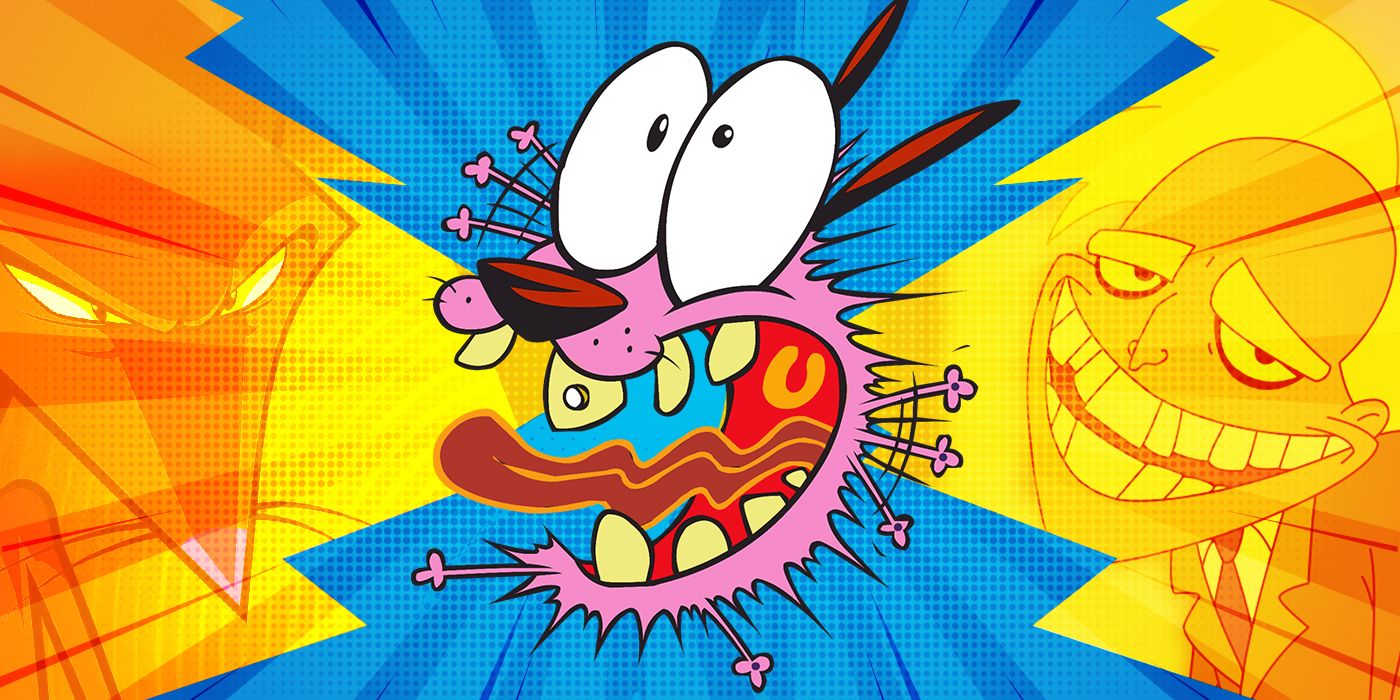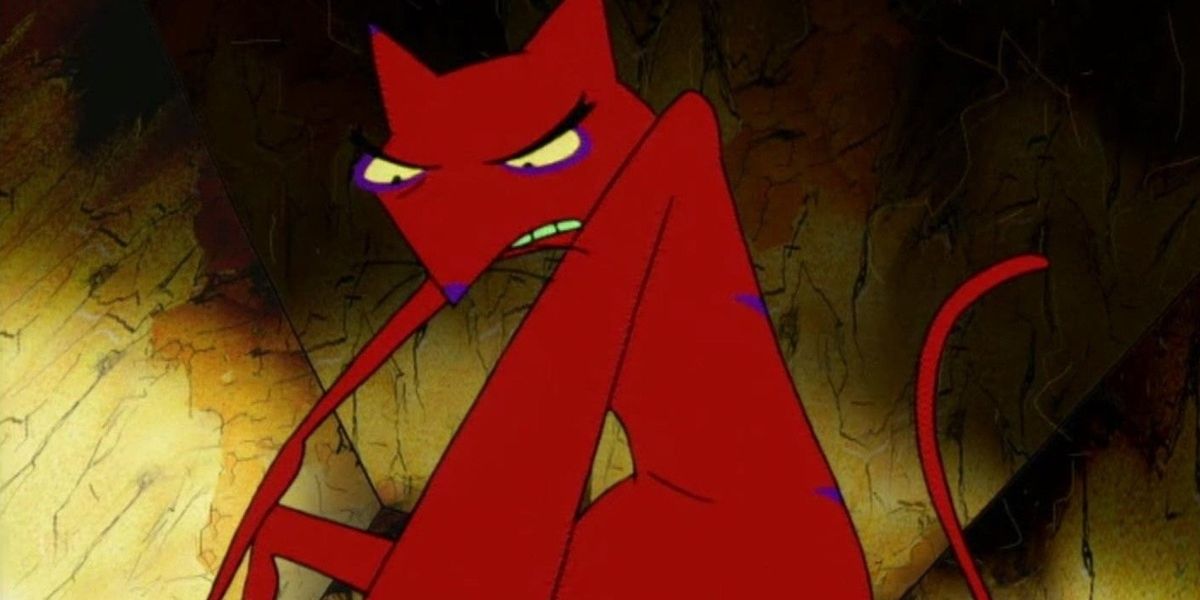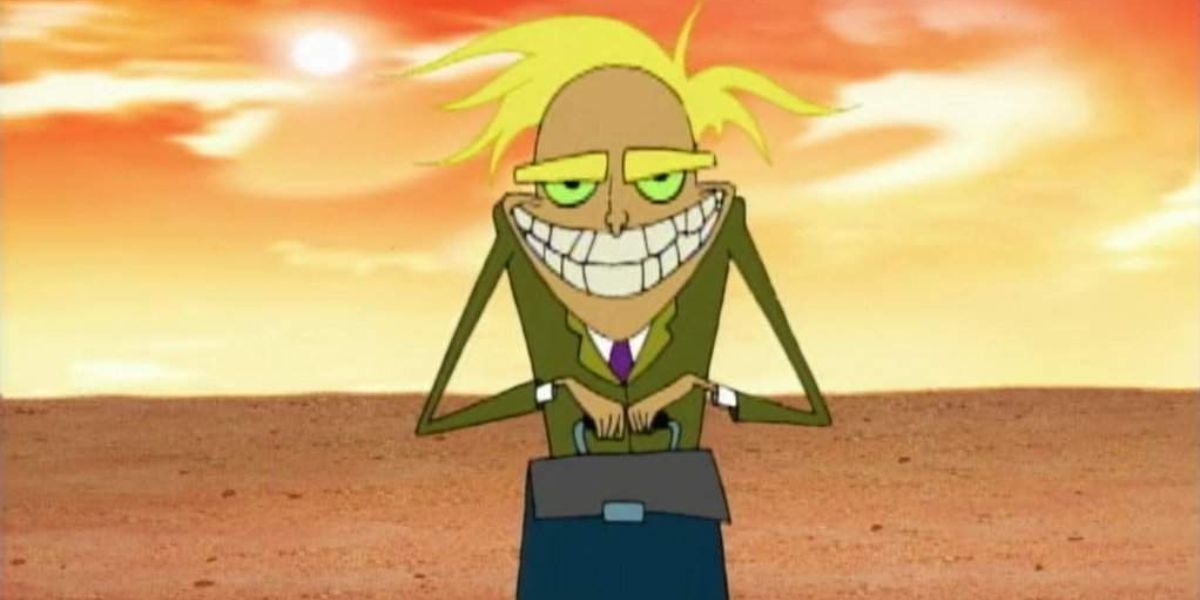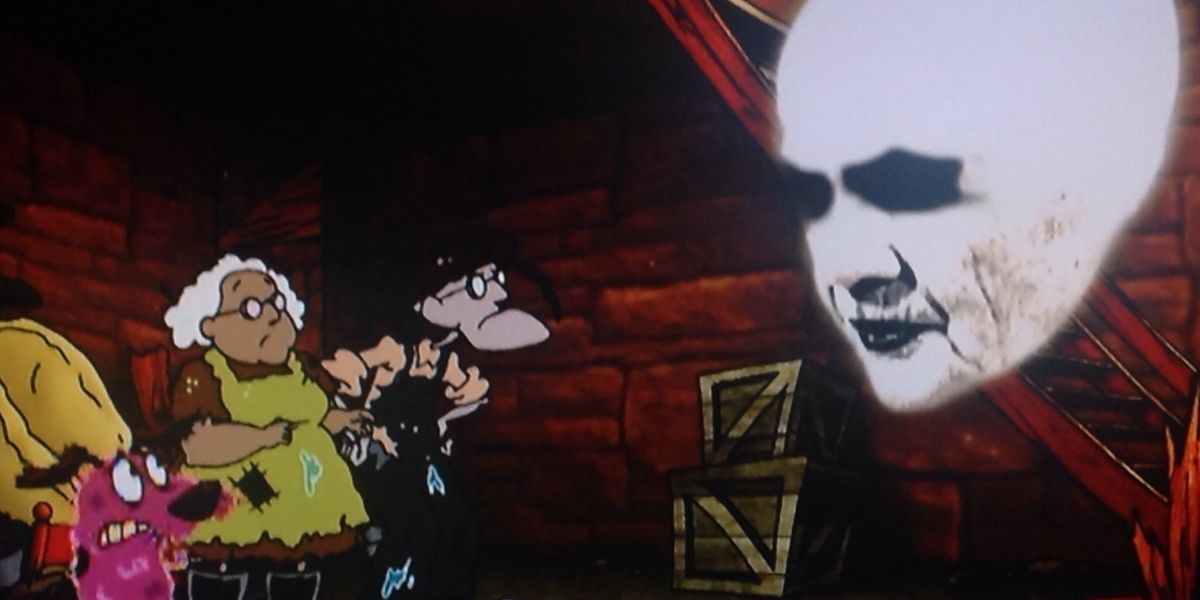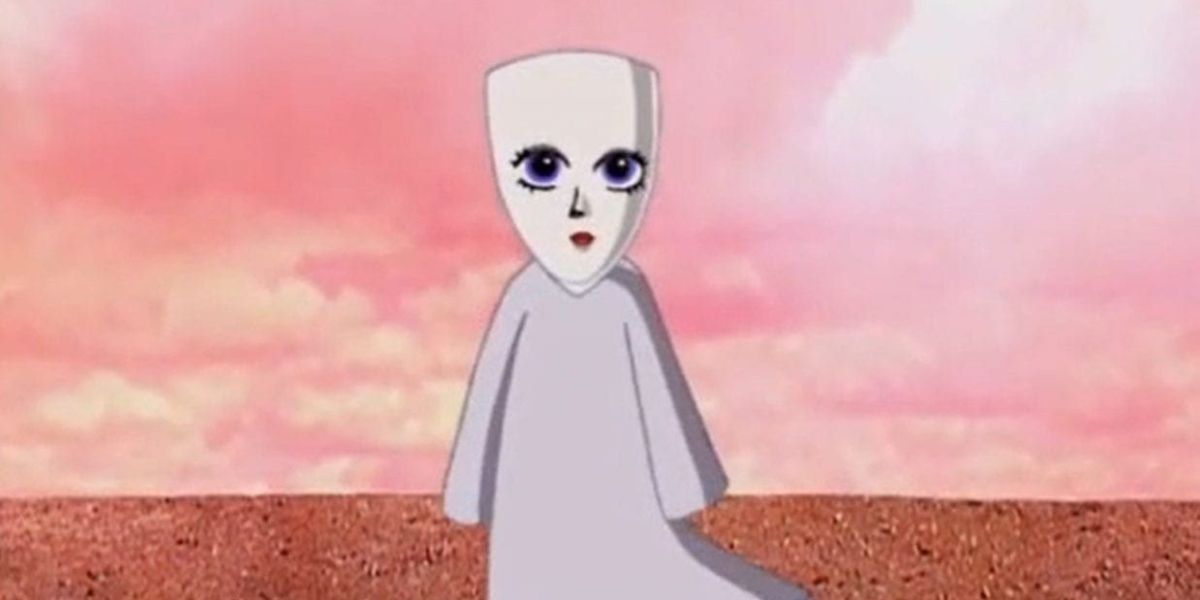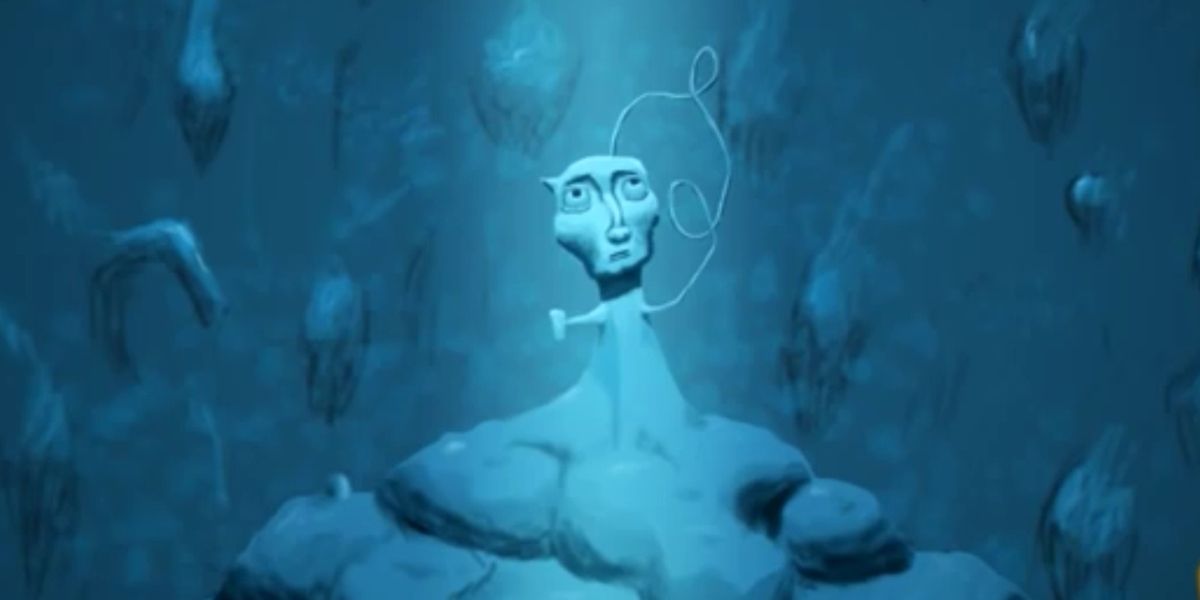Courage, the Cowardly Dog is the equivalent of a fever dream in the middle of the night, where the shadows and monsters lurk. It is also an animated series on Cartoon Network that ran for four years in the early 2000s. Created and developed by John R. Dilworth (Doug), it follows the life of an endlessly petrified dog ironically named Courage, voiced by comedian Marty Grabstein. Left abandoned by his previous owners, Courage finds a new home in the sweet-natured Muriel Bagge, voiced by the late Thea White (The Fog of Courage). Courage also found an abusive, jealous enemy in Muriel’s husband, Eustace Bagge, voiced by Lionel Wilson (Tom Terrific) and Arthur Anderson (Me and Orson Welles).
Notwithstanding its 4 Season run, Courage, the Cowardly Dog was strange enough to remain in the social consciousness of millennials who grew up watching the show. Despite being a children’s cartoon, the series didn’t shy away from delving into full-on camp/horror territory. It had some of the most disturbing, grotesque characters and narratives that bordered on questionably appropriate for children. Some episodes were entirely unsuitable, for sure. It wasn’t traumatizing in nature. It was simply so odd from anything else at the time that its longevity hinges on that. It makes those who watched it then revisit Courage, the Cowardly Dog, to affirm that it wasn’t a nightmare they had one time. Or that they made it up altogether.
It’s a strange conundrum to parse out 20 years later. In revisiting some of the five most frightening episodes this show had to offer, it revealed more than frightening plotlines. It put on display the social anxieties of a generation that grew up during that period. Courage became a placeholder for children to project their fears unto.
“A Night at the Katz Motel” (Season 1, Episode 1)
It’s always best to start from the beginning. How is Courage, the Cowardly Dog, introduced to its young audiences? Naturally, by referencing one of the most famous Alfred Hitchock horror films, Psycho. While most children might not recognize the reference to the movie where Norman Bates murders his mother, mummifies her body to leave in the cellar, and kills anyone who stays at the motel, it’s still a jarring intro for young viewers. Muriel, Eustace, and Courage arrive at the eerily familiar motel called The Kats in the middle of a thunderstorm. Run by none other than a cat named Katz, an ironic sign states that no dogs were allowed inside. Out in the rain, Courage must go.
The devil is in the details with this episode. The layout of the hotel room is ripped-off carpet, moldy walls, and a giant painting of a person’s face staring directly down onto the bed with empty eyes. If only that were the most horrifying detail of this episode. Later on, viewers come to find out that Katz, the cat (entirely in tune with the show’s dark humor), has been harvesting radioactive spiders who feast on human flesh. In this case, the human flesh of Muriel and Eustace. Courage must overcome his fears to save them, which is the longest-running gag of the entire series, aside from the contrast of his name and personality.
As far as introductory pilots go, Courage, the Cowardly Dog’s comes straight out of the gate with one of the most terrifying scenarios anyone could imagine. It also sets up the thematic pattern of Courage stewarding the role of small children, who are dismissed for their fears—left on their own to defeat them.
“Freaky Fred” (Season 1, Episode 4)
This particular episode calls back to all those family reunions, where there was always one cousin who everyone avoided. The one cousin who had this aura of mystery and danger because they would only show up to that once-a-year reunion. Except, this is much worse.
Fred is Muriel’s barber cousin. Fred also spends almost the entire episode narrating in lyrical poetry, almost like Dr. Seuss, and ending every phrase with “naughty.” If that isn’t enough, he also has the most bone-chilling smile, more expansive than the rest of his face, that makes the hair on the back of your neck stand up.
If that weren’t enough to prickle an adult’s skin, Fred’s entire recounting of shaving the fur off his childhood hamster would do it. In tandem with his rhyming voice, the camera cuts to still images of the little pink hamster and back to Courage, trapped in the bathroom with Fred. As the lyrical voice of Fred gets more profound, the still image turns into a bald hamster. With Courage thrust onto the toilet seat, the shower curtain turned into a barber’s cape, and Fred holding the buzzing hair clippers, Courage’s fate is sealed just like that of the hamster’s.
What is so disturbing about this scene is the mixture of being left in a room with a strange relative and being coerced into an uncomfortable situation. Finally, it’s the act itself committed against Courage’s will that sets the tone. It’s a scenario all too familiar with children who’ve been abused by someone close to them. In hindsight, it’s an episode that dared to go where no other children’s show ever did at the time. Horror can often give viewers the distance needed to reconcile with traumatic events.
“The House of Discontent” (Season 2, Episode 12)
The horror of “The House of Discontent” lies in its commentary on the ecological perils of the future. And yes, it is also the very realistic-looking floating head with blank dark eyes and booming voice. It’s the demonic spirit of the Harvest Moon that visits Eustace and Muriel at their farm, angry at the lack of respect for their land and never offering anything during the night of Harvest Moon. The spirit casts a spell over the land that makes strange things occur. Unusual things being your garden variety Courage, the Cowardly Dog odd kinds of things.
At the end of the episode, the spirit challenges Eustace and Murial in a very pragmatic, world view type of way. For them to save themselves, they must grow a single plant in ten minutes. This only augments the hubris of Eustace, who refuses to do so and only utilizes those ten minutes to argue with the spirit about the semantics of being a farmer. It is Courage who manages to grow a single flower that saves their lives and land.
In the interim, while Eustace was arguing and Courage was growing the flower, the spirit started to make the heat rise in the house. It’s no coincidence that Eustace’s hubris links to the ecological state of their farmland. It is also no accident the Harvest Moon spirit is the manifestation of nature, as opposed to the flowery imagery of “mother nature” most everyone knows it as. Aesthetically, this spirit is angry and callous and with good reason. It represents the state of the world’s environmental status, and it’ll only get worse if humanity lets its hubris get in the way.
“The Mask” (Season 4, Episode 7)
If these episodes were ranked by order of complete, unabashed horror, this one would be number one. It is pure abject terror. An entity wearing what appears to be a porcelain mask shows up on the farm. Absolutely unprompted, this entity—calling itself Kitty—mutters to Courage, “dogs are evil,” and proceeds to violently attack him with several inanimate large objects. Courage is left in a bloodied, battered, unrecognizable state from the attack. Muriel, however, doesn’t seem to acknowledge the severity of this stranger.
It quickly comes to the viewer's attention that the theme of the episode is about facing reality. Kitty’s “mask” represents the carefully veiled disguise people use to hide from the rest of the world. Whether it’s Muriel’s habit of eating in the middle of the night that leads to her weight gain or Eustace’s charade of pretending to fix things around the house so that Muriel doesn’t bother him, it’s still a way to lie to themselves. More importantly, the way Muriel and Eustace neglect Courage from time to time. From Eustace’s physical abuse to Muriel’s willful ignorance of the thing Courage tells her, the mask becomes that barrier between the fiction and nonfiction of the inner workings of people.
More unsettling is the depiction of abusive relationships. Kitty’s best friend Bunny is in an abusive relationship with a gangster, Mad Dog. The show is not afraid of displaying the inner workings of trauma and violence, as Courage finds Bunny buried under a pile of dirt for trying to escape Mad Dog. This episode works on multiple registers as the euphemism for “masks” illustrates the nature of an abusive relationship. Their true nature is often masked by those who abuse and the victims themselves.
Despite the visceral depictions of abuse and brutalization within the context of kids’ cartoons, the ending ends on an upbeat note, as Courage succeeds in helping Bunny escape, and Bunny reunites with Kitty. Its moral is unorthodox, but it's willing to take young viewers through some of the darker parts of being older.
“Perfect” (Season 4, Episode 13)
“Perfect” is the final episode in the entire series’ short-lived run. The series ends with its most terrifying theme yet: perfection. If there’s anything Courage is not known for, it’s the attitude or personality of a perfectionist. With every episode, it always feels like he can’t do anything right. Yet, it is always Courage who sees things that others cannot and is the one to save his family.
Courage’s insecurities and not “being enough” manifest in the intensity of a stern school teacher that follows him around giving etiquette lessons. This lack of self-confidence is a resounding sentiment many children can relate to. It’s about the precarious nature of the world as they grow up. Where do they fit in it? In Courage, this fear and anxiety turn into abstract nightmares of a blue three-dimensional figure chanting about how he is not enough. The nightmares compile into various depictions of fallibility on behalf of Courage’s character that only emphasizes the ambiguity of “self.”
It’s not the nightmares that make this for a chilling episode. It’s the endless battering against Courage by the stern teacher. When will he be “perfect”? When will anyone ever be enough for this world? How much symbolic beating is someone supposed to take before they are indeed “perfect”?
Well, the show answers the question in the form of an innocuous eel that shows up in Courage’s bathtub to reassure him that existing is enough, that he is perfect in his imperfections. A very surprisingly happy ending to a very dark cartoon series. Somehow, ending with Courage’s newfound confidence gives viewers that sliver of hope that things do get better. Maybe this is a children’s show after all.

